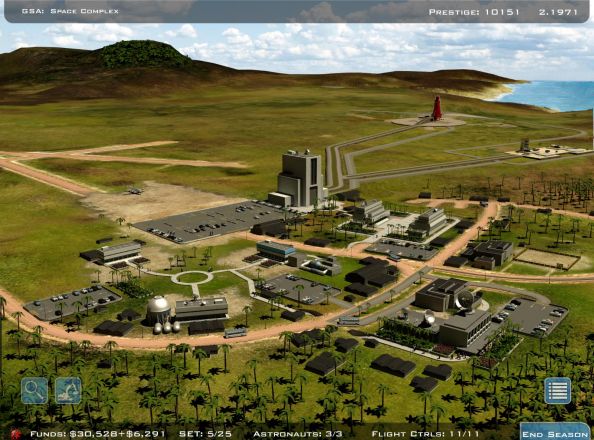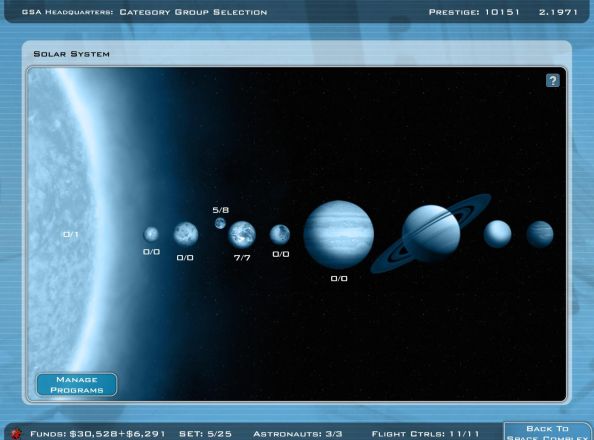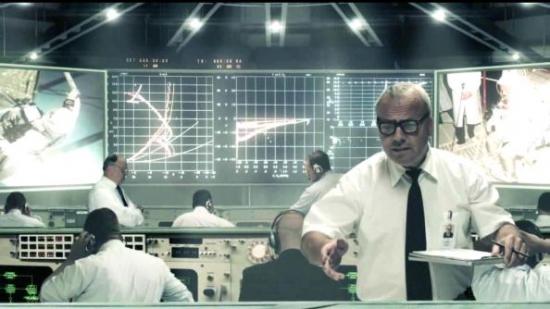Space gaming in the 1990s wasn’t all Wing Commander sequels and pestering David Braben on alt.fan.elite you know. Well, it was mostly that, but in amongst the Chris Roberts razzmatazz and newsgroup sniping some delightful space oddities were thrown up into the exosphere; games such as Buzz Aldrin’s Race Into Space, that served to remind us just how tricky it was for humans to get up there in the first place.
With Braben and Roberts preparing their triumphant returns to the space genre, it seems entirely natural to welcome back Mr. Aldrin after all these years, especially after hearing that Buzz Aldrin’s Space Program Manager won’t conclude with the Moon landings as Race Into Space had done, but aims to incorporate shuttle development, space station construction, Curiosity-style planetary excursions and even the distant possibility of setting up permanent bases on the Moon and Mars.

In order to facilitate the development of such advancements, developer Polar Motion has deemed it necessary to subsume NASA and its competitors into one administration, the Global Space Agency; a kind of nascent XCOM that receives funding from various governments in return for chasing goals that might run counter to those of other nations (such as launching lucrative communications satellites rather than researching a Martian privy). It’s a neat fudge in light of the developer’s long-term aims, but given that the game begins in 1955 (and in the current Early Access version ends during the Apollo era), having the historical diagrams and photos in place without any of the cold war context is immediately jarring.
Ignacio Liverotti, SPA’s Lead Designer, admits that there’s some concern among early adopters over the implementation of the GSA. “Some seem to love the idea of having a big sandbox to play around with,” he says, “whereas others want to play as directors of real space agencies and feel the pressure that the opposite side will beat them to the Moon if they don’t do their job well. I think I now understand where they are coming from, so we’re now evaluating some options with the publisher in order to address those kind of players as well.”
In spite of the technical nature of the subject matter, in it’s current form SPM is easy to get to grips with and not nearly as punishing as it’s 20-year old predecessor. In essence it comes down to hiring the right staff for the right research project and launching it into space at the right time, hopefully without going over a budget which is re-evaluated every few years depending on how many successful missions have been completed during your administration.

Once a mission begins there’s no interference allowed and success or failure depends on how much time has been sunk into research and the relative skills of flight controllers and crew, no doubt with a few random dice rolls in the background for good measure. Partly thanks to the cardboard theatre-style transitions, the mission sequences are actually quite compelling to sit through, possibly because the stakes for failure are always high, although as the seasons progress you do start to wish you could skip through them. No doubt in a future version of the game time travel will indeed be possible.
The big question for many is how Buzz Aldrin’s Space Program squares up to that of the Kerbals. The answer is that it doesn’t. SPM currently plays out more like a Kairosoft game than anything approaching the physics-based construction of Kerbal Space Program. First and foremost Space Program Manager is about ticking the right boxes, not arranging them haphazardly into a spaceship shape, launching them skyward and hoping for the best.
Where the two games are similar is that they offer the promise of great things to come. Currently SPM offers only a part of the sandbox mode, for which many of the features are still missing and ends before the Apollo program really got started, while the campaign mode is entirely absent.With another forty years of space history to implement, plus missions to Mars and beyond, let’s just hope we don’t have to endure another two decades before humanity’s race into space is fully represented.
